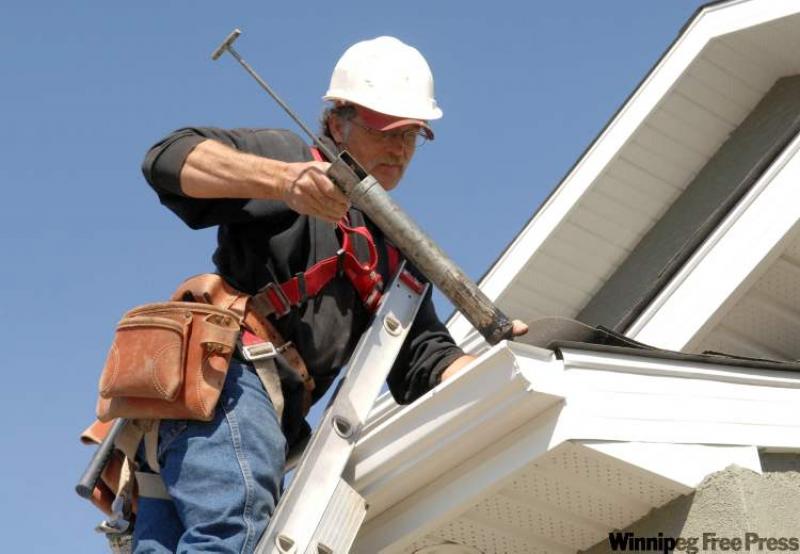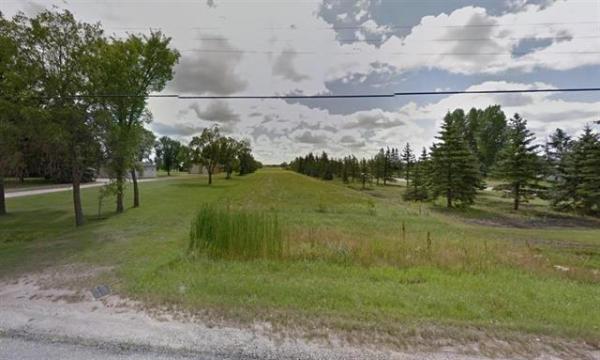QUESTION: I am hoping you might be able to help me regarding roof shingles.
I am in a custom-built house that was built in the fall of 1988. We moved into the house at the end of January 1989. We had the house shingled with 235-pound HD asphalt shingles.
In July 1996, a hailstorm went through Whyte Ridge and my home ended up being hit by hail severe enough that the shingles and eavestroughs had to be replaced. The shingles were replaced the summer of 1997 with IKO 25-Year Skyline shingles. What can you tell me about these shingles? From what I understand, IKO... discontinued making them after 2002 due to problems.
The roof on my two-storey house is now 13 years old and the shingles are curling and shrinking quite badly. My neighbour, who didn't go with the 25-year shingles, but cheaper shingles, had his roof shingled by the same company. The shingles on his house look 100 per cent better than mine. They are not curling at all.
Can you provide me with any information or suggestions as to what I should do? Are 235-lb. 25-year shingles not suppose to last 25 years? Were there defects with these shingles? Karen Kublick
ANSWER: Determining whether a shingle is defective, damaged or simply the result of typical wear can be a very tricky task. Normally, it requires very experienced roofing contractors to assess this issue based on years of experience.
There is a chance that you have shingles that were manufactured with a specific defect that caused them to wear prematurely, but that could also be caused by other issues in the house.
There were hundreds of homes that had roofs replaced at the same time as yours after a rash of hailstorms in the late nineties. I've inspected homes and stood on roofs and seen similar-aged roofing for entire blocks, due to those storms.
Because of that unprecedented number of hail damage insurance claims, roofers were brought in from several other provinces to meet the demand for new roofs. Most of the complaints about those new roofs were related to sloppy or quick installation, not materials. Having said that, I'm sure that several manufacturers were working overtime to try and meet the demand for all those shingles. There is a possibility that some orders were rushed and substandard materials were produced.
Some fancier patterned shingles have had issues with defects several years after manufacture. An experienced roofer I know described one style as having been "stamped" too deep for the pattern, which actually allowed significant premature deterioration at the stamped areas. I don't know if your particular brand and style of shingle was known to have this problem, but it was the heavier, more costly style that was at fault.
The real dilemma for homeowners is finding solid information to rely on to prove these defects. In my experience, most roofing manufacturers are very reluctant to admit that some of their products are defective, which could lead to huge claims or lawsuits.
While they have long warranties, like your 25-year models, that does not necessarily mean the shingles will last that long. All of these warranties are limited and will often provide little compensation unless defects occur after only a few years. Trying to make a claim after the midpoint of the anticipated life of the roofing may be fruitless. The first thing manufacturers attempt to do is try to blame the damage on certain aspects of the home or environmental factors. In some situations they are perfectly justified in these claims; in others, they are not.
Many homes have typical asphalt shingles installed in areas where they are prone to premature wear. This may be due to minimal pitch, major exposure to sun or vegetation, but is most often due to problems in the attic. Insufficient ventilation, improper or minimal insulation, or excess moist air intrusion from the living space can all be factors that will wear out roofing well before its time. I see evidence of these issues every day.
There is a chance that your home has a completely different design or environment than your neighbour's house. Poking your head into your attic through the access hatch and looking for signs of excess moisture may provide some answers.
The first thing to do is to call one or two reputable roofing contractors to come and evaluate your roofing. They should be able to tell you how much life you have left in your roof and also give you the information you seek about specific types of roofing that have had problems.
If you have the original invoices from the roofer that installed the shingles, with specifics about the product, you may have some recourse. Also, I would do some research on the Internet, particularly on sites that deal with consumer products and recalls, to see if your shingles have been identified as suspect.
Hiring an experienced CAHPI Registered Home Inspector to look at your roof, attic and home in general may also provide solutions to prevent a reoccurrence after replacement of the damaged roofing.
Ari Marantz is the owner of Trained Eye Home Inspection Ltd. and the president of the Canadian Association of Home & Property Inspectors -- Manitoba (www.cahpi.mb.ca). Questions can be emailed to the address below. Ari can be reached at (204) 291-5358 or check out his website at www.trainedeye.ca.
trainedeye@iname.com




